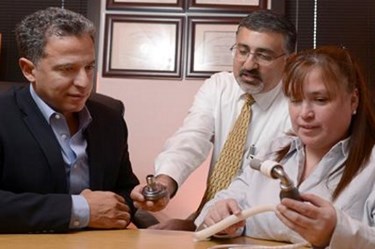Could Ventricular Assist Devices Help Cure Heart Failure?
By Chuck Seegert, Ph.D.

Recent cutting-edge research has shown that left ventricular assist devices may help regenerate heart tissue. Prolonged use of these devices cuts down on certain forms of oxidative cell damage, enabling significant cardiac cell proliferation in humans.
The onset of heart failure can be debilitating and deadly. Damage to the heart impairs its ability to pump blood efficiently, limiting oxygen delivery to other vital organs in the body. Millions of people suffer from heart failure, and some projections state that its prevalence will increase over the coming years as the population ages. To help remedy the effects of heart failure, mechanical pumps called left ventricular assist devices (LVADs) are sometimes used. LVADs replace the function of the damaged heart and pump blood to the patient’s body.
New research from UT Southwestern Medical Center shows that LVADs may be doing more than assisting the damaged heart, according to a recent press release. Based on previous experiments in mice, the researchers’ goal was to stimulate tissue regeneration in humans. After birth, the ability to regenerate new tissue is lost when the heart begins pumping blood. As the blood circulates, it increases oxygenation, which causes oxidative cell damage. This oxidative damage inhibits regenerative processes in the cells.
By studying samples of cardiac tissue before and after the implementation of LVADs, UT Southwestern researchers were able to confirm their hypothesis in humans, according to a recent study published by the team in the Journal of the American College of Cardiology. The theory was that unloading the heart muscle with the LVAD would reduce the oxidative damage in the heart. When they examined tissue that had been treated by the LVAD, they found a 60 percent decrease in mitochondria and a 45 percent increase in cardiomyocyte size, indicating cell growth.
In addition to this, when the hearts were exposed to longer durations of LVAD support, responses by the tissue were also greater in a statistically significant way, according to the study. The team concluded that decreased mitochondrial content was associated with a decrease in oxidative stress, which allowed cell growth and proliferation.
"This result shows that patients with mechanical assist devices have the ability to make their muscle cells divide," said Dr. Hesham Sadek, an assistant professor of internal medicine at UT Southwestern and lead author of the study, in the press release. "And the obvious question now is, 'Are these hearts regenerating? Could LVADs be used as a cure for heart failure?'"
Technologies to support or replace the function of the human heart continue to accumulate. Recently, a patient was able to leave the hospital without a human heart, while waiting for a transplant.
Image Credit: UT Southwestern
